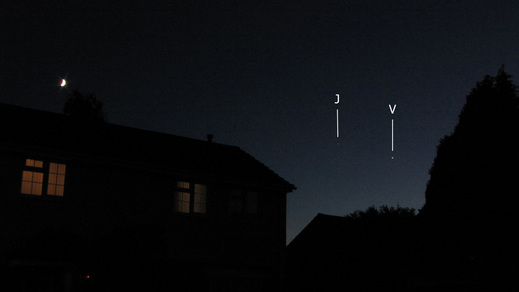 Crescent moon, Jupiter and Venus in the evening twilight taken on 22 June 2015.
Crescent moon, Jupiter and Venus in the evening twilight taken on 22 June 2015.  Crescent moon on 22 June 2015.
Crescent moon on 22 June 2015. This is the closest planetary conjunction this year. Jupiter is seen a little above Venus, both at an elevation of around 10 degrees above the WNW horizon. I estimated the separation at this time as 0.37 degrees (22 arcminutes), which is pretty close (about 2/3 the diameter of the full moon). It was obviously easy to see both objects in a single field of view of binoculars, and by coincidence theyhad the same apparent size disk (32 arcseconds). Venus's phase at the time was a 34% crescent, but unfortunately my binoculars were not good enough to see the crescent shape!


 RSS Feed
RSS Feed
